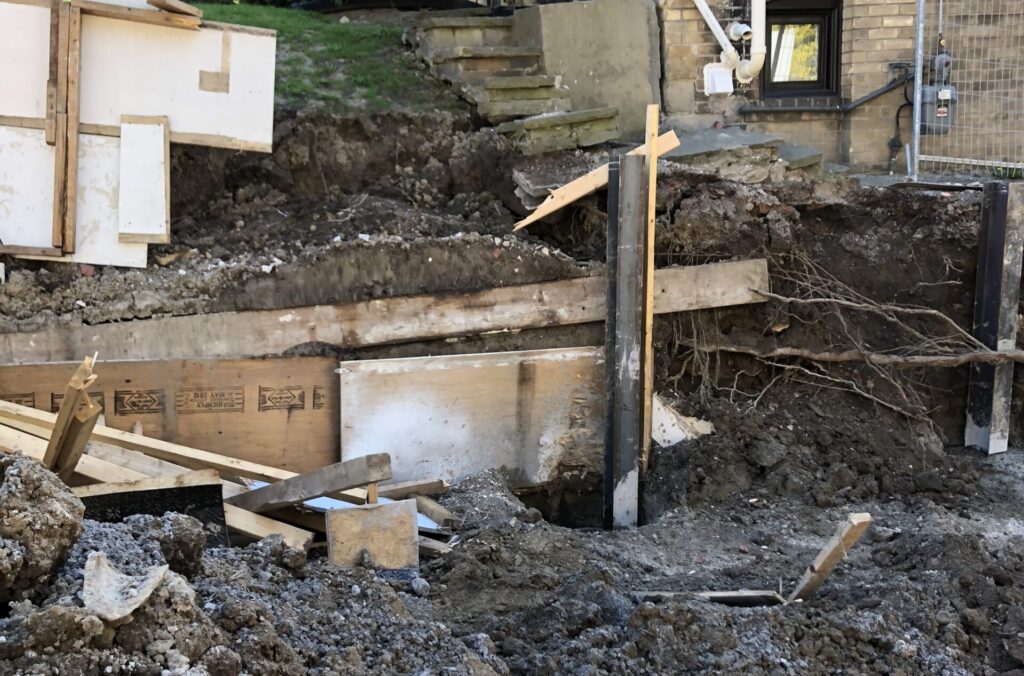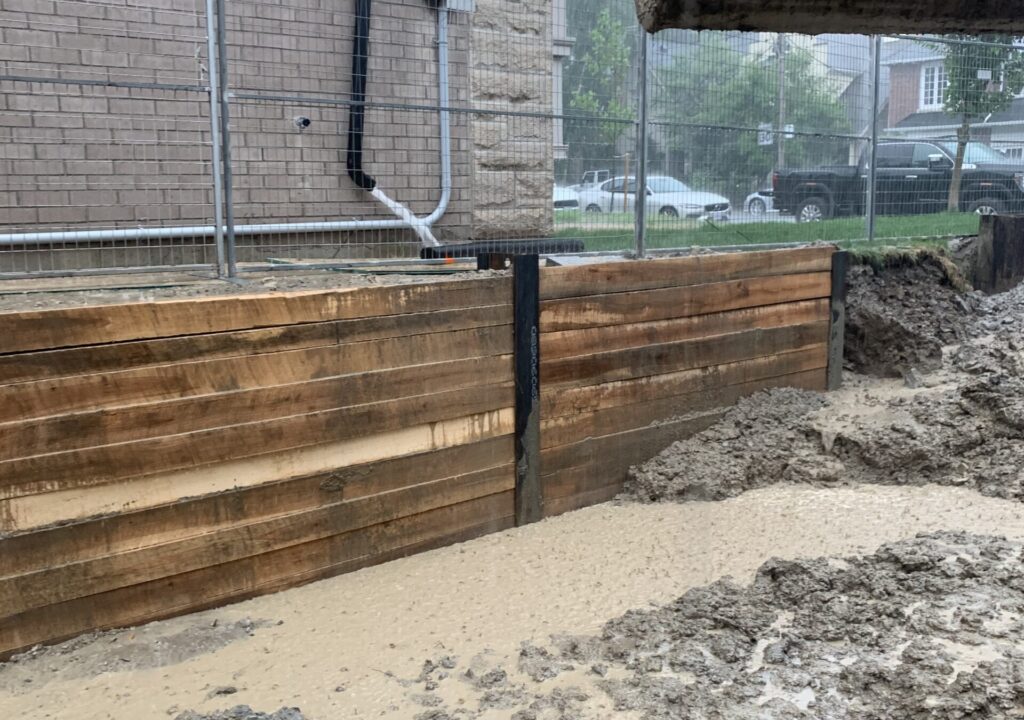What You Need to Know About Shoring
1. Safety/OHSA/OBC Requirements
Excavation hazards may lead to serious incidents or worker injuries as a result of excavation cave-ins. Before excavating, it is important to know whether your project requires an engineer to design your excavation wall.
For open and vertical excavations of 4 feet and 30 meters long, or more than 300 meters long, there must be a shoring system designed by a professional engineer (under O. Reg 213/91 - Construction Projects).

2. Erosion and Settlement of Neighbouring Property
Shoring is used to support the walls of an excavation to prevent soil erosion and minimize settlement of soil adjacent to the excavation. Although some movement of an excavation is permissible to relieve some of the soil pressure acting on the wall, properly designed shoring will ensure that the soil that is excavated or backfilled will not cave in, therefore minimizing damage.

3. Protection of Neighbouring Footings
An excavation that is positioned in the angle of repose of a neighbouring structure's footing must have special shoring constructed to prevent settlement.
The angle of repose defines the slope from the bottom of a footing required to ensure soil stability. Sloping the soil more steeply threatens to undermine the footing with the potential for structure damage

